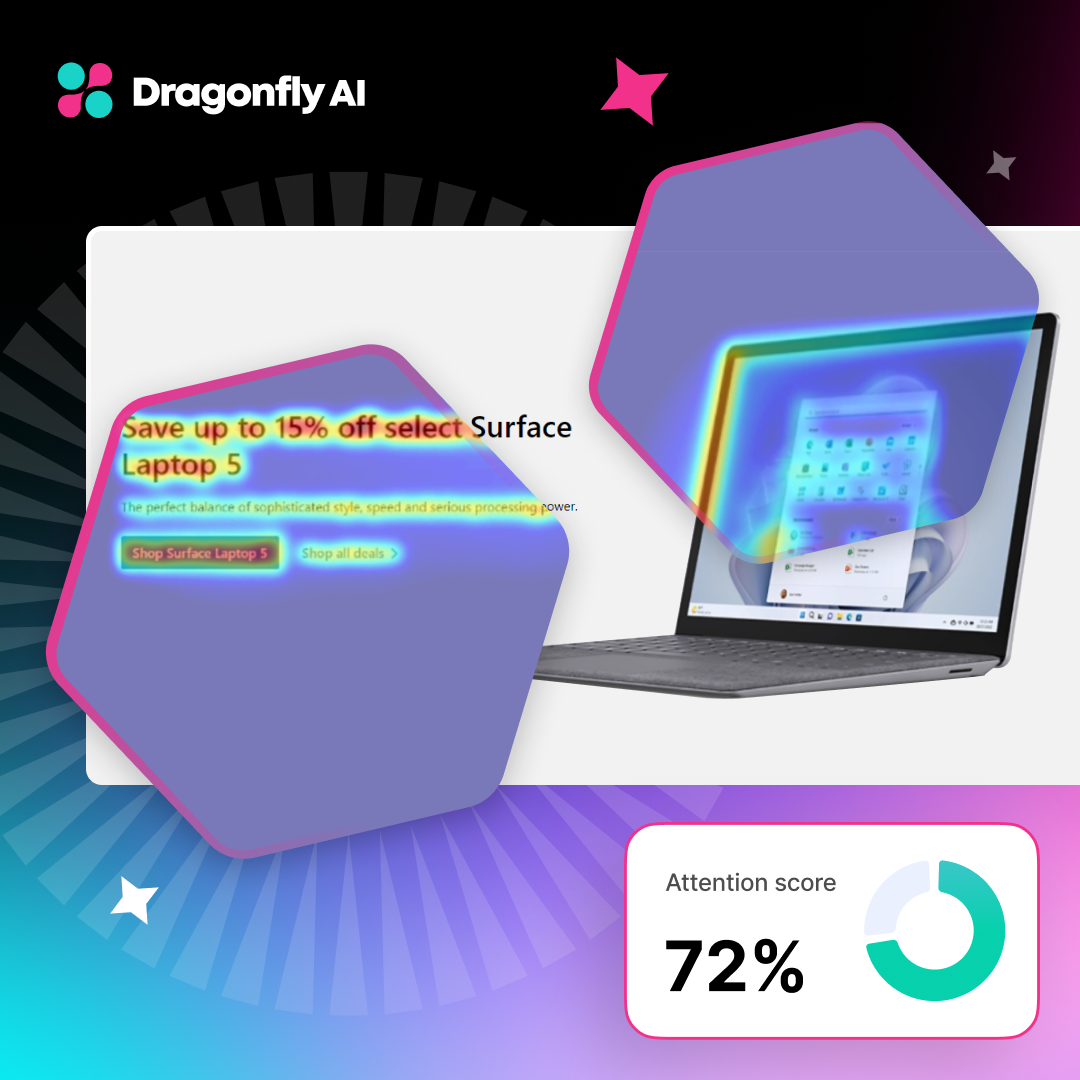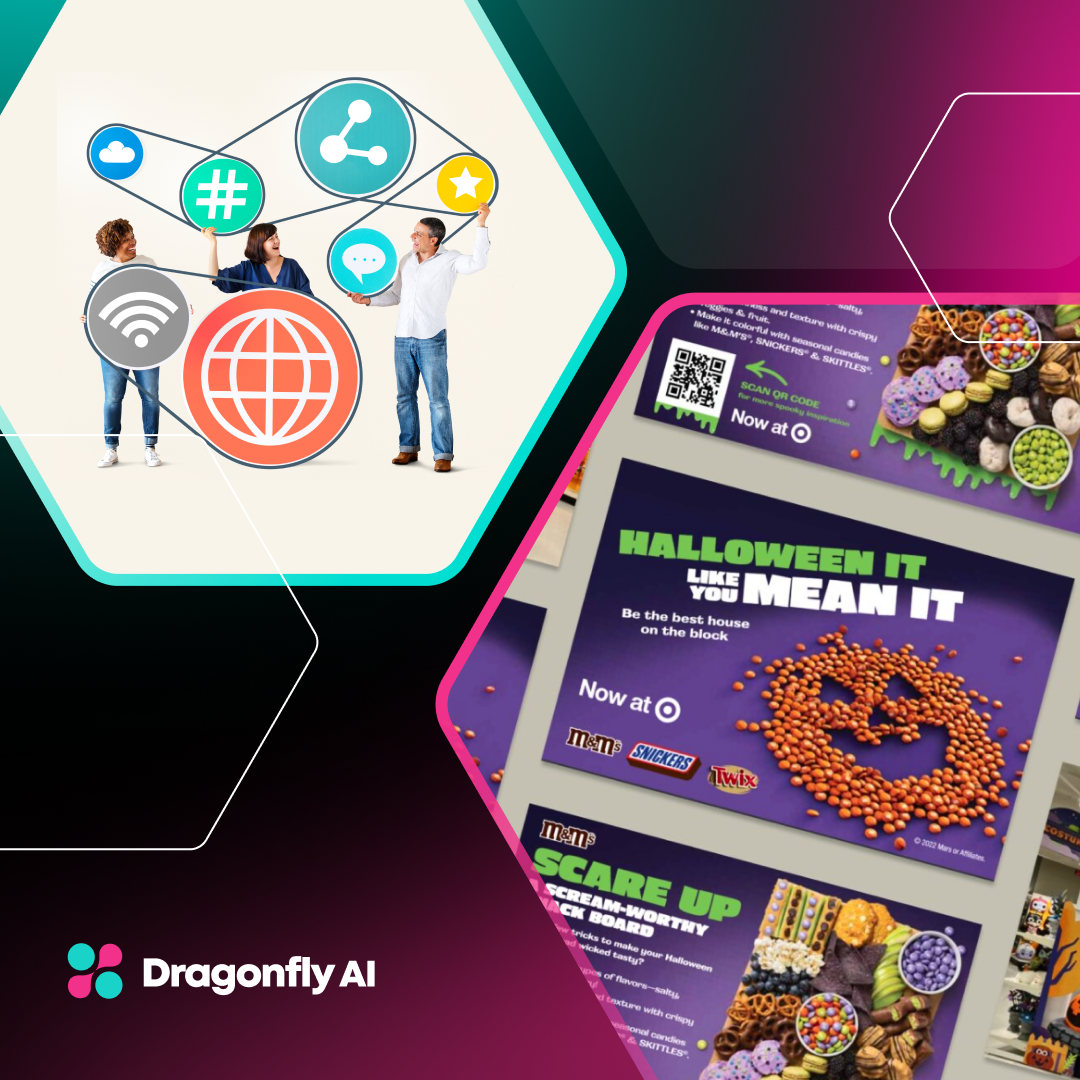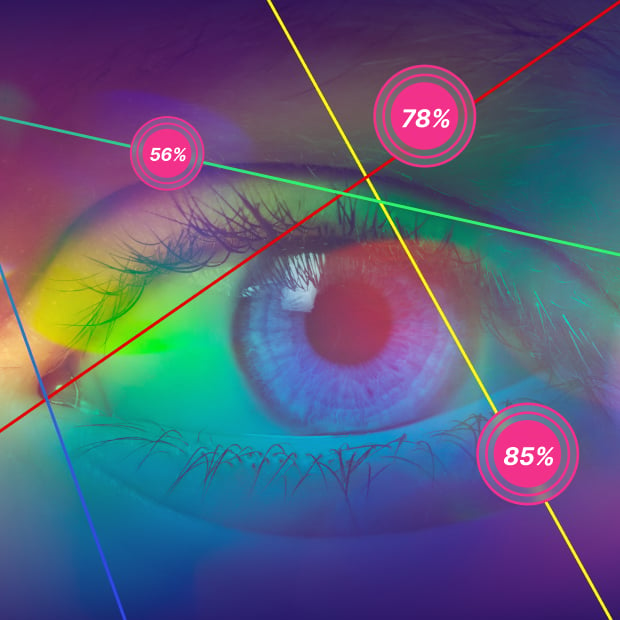Balance in design refers to the distribution of visual elements to yield a sense of harmony, wholeness, and viewer satisfaction. According to research, the human brain processes images 60,000 times faster than text, while 90% of information transmitted to the brain is visual.
Achieving visual design balance is paramount for effective communication, as a well-balanced design will direct the viewer’s gaze and effectively convey its message. In the modern era, artificial intelligence (AI) creative testing can revolutionize design to construct powerful visual narratives for maximum engagement by understanding what makes an ad work.
What is AI Powered Creative Testing?
AI-powered creative testing is a revolutionary approach to evaluating and optimizing ad creatives using artificial intelligence. This innovative method enables marketers to test multiple versions of their ads against specific campaign goals and target audiences in a matter of minutes. By leveraging AI-powered creative testing tools, businesses can quickly identify the most effective ad creatives, reduce the risk of ad fatigue, and make data-driven decisions to drive brand growth. This approach not only enhances the efficiency of the testing process but also ensures that the ad creatives resonate well with the intended audience, ultimately leading to improved engagement and conversion rates.
The Balance Principle of Design
The balance principle of design is an intricate art focusing on the equilibrium between elements in creative assets. Balance can be achieved through vertical, horizontal, diagonal, or background versus foreground arrangements.
To achieve balance in design, consider the following elements:
- Objects: The placement and scale of objects within a composition can significantly influence its overall balance.
- Colors: The choice of colors, including considerations of value, hue, saturation, and transparency, plays a pivotal role in achieving visual equilibrium and increasing brand recognition by 80%.
- Textures: The interplay between smooth and rough textures adds depth and dimension, creating balance.
- Space: The use of empty spaces is as important as the elements in achieving equilibrium.
- Still versus Moving Elements: In dynamic designs, balancing static and dynamic elements is vital to maintain cohesion and harmony.
Types of Balance in Design
Two primary types of balance characterize the design landscape:
- Symmetrical Balance: This classic approach achieves equilibrium by mirroring identical elements on both sides of a composition. It evokes a sense of stability and order.
- Asymmetrical Balance: Embracing diversity, asymmetrical balance creates equilibrium by placing different elements on each side. It fosters a dynamic and engaging visual experience.
Balancing Elements for Visual Harmony
In the design world, visual harmony captures attention and engages emotions.
To achieve this, designers can focus on balance in the following areas:
- Color: Ensuring that colors complement and enhance each other within the design.
- Texture: Skillfully mixing smooth and rough textures to add richness and depth.
- Space: Allocating space judiciously, creating breathing room, or emphasizing focal points.
- Shape: Striking a balance between different shapes within the composition allows them to coexist harmoniously.
.png?width=1280&height=700&name=Blog%20image%202%20(7).png)
Hierarchy in Design Principles
Hierarchy in design is the arrangement of elements to create a clear visual order to convey information. This foundational principle ensures user-friendly design for swift information processing.
By strategically employing visual cues, designers can direct the user's attention to specific elements within a composition. Hierarchy impacts user attention with the calculated prioritization of design elements for maximum engagement.
Achieving Effective Design Hierarchy with Creative Strategy
Several key elements contribute to establishing an effective hierarchy in design:
- Size for Emphasizing Importance: Larger elements tend to draw more attention, making them ideal for highlighting vital information or focal points.
- Color, Whitespace, & Effective Contrast: Contrasting colors, proper whitespace, and effective contrast guide attention to key content and enhance readability.
- Strategic Alignment: Elements aligned in a structured manner create a sense of order, making it easier for users to process information.
- Proximity Signifying Connection: Elements placed close together suggest a relationship, helping users understand the associations between different pieces of information.
- Visual Cues: These powerful cues guide attention and understanding through direction, color, spacing, size, contrast, movement, and focal points.
- Strategic Typography: Varied typography, including font size and style, can emphasize headlines, subheadings, and body text.
- Consider Viewing Patterns: Understanding how users typically scan and read content, such as the F-pattern or Z-pattern, allows for better placement of critical information.
The Limitations of Traditional Ad Testing Methods
Traditional ad testing methods are often time-consuming, tedious, and limited in their ability to provide actionable insights. These methods may not be able to cope with changing market dynamics, making the results obsolete. Moreover, traditional testing methods are often unscalable, limiting marketers from testing the impact of multiple creative variables at once for different sets of target audiences. As a result, businesses may struggle to optimize their ad creatives effectively, leading to wasted marketing budgets and missed opportunities. The inability to quickly adapt and iterate on ad creatives can hinder a brand’s ability to stay competitive in a fast-paced digital landscape.
How AI Creative Testing Works
AI-powered creative testing tools use machine learning algorithms to evaluate the effectiveness of different ad creatives on variables such as recall, attention, copies, music, emotions, and more. These tools provide custom creative analytics and reporting, packed with actionable insights and improvement suggestions. AI-powered creative testing tools can predict the performance of ad creatives and provide recommendations for optimization. This enables marketers to make informed decisions and create ad campaigns that resonate with their target audience. The ability to quickly iterate and refine ad creatives based on real-time data ensures that campaigns remain relevant and effective.
Benefits of Creative Testing
Creative testing offers numerous benefits for businesses looking to optimize their ad campaigns. By testing multiple versions of their ads, marketers can identify the most effective ad creatives, reduce the risk of ad fatigue, and improve overall campaign performance. Creative testing also enables businesses to make data-driven decisions, rather than relying on intuition or guesswork. Additionally, AI-powered creative testing tools can help marketers to scale their ad campaigns more efficiently, reducing the time and resources required to launch and optimize their ads. This approach not only enhances the effectiveness of ad campaigns but also ensures that marketing budgets are used cost-effectively.
Ad Creative Testing Automation
Ad creative testing automation is a game-changer for businesses looking to streamline their ad testing processes. By automating the testing process, marketers can quickly and easily evaluate multiple versions of their ads, identify the most effective ad creatives, and optimize their campaigns for better performance. AI-powered creative testing tools can automate the testing process, providing marketers with actionable insights and recommendations for improvement. This enables businesses to focus on high-level creative strategy, rather than getting bogged down in manual testing processes. The automation of ad creative testing not only saves time but also ensures that campaigns are continuously optimized for maximum engagement and effectiveness.
Design Data and AI: A Perfect Match
Today, integrating AI-powered creative testing has emerged as a game-changing strategy. By automating tasks, AI eliminates manual work, streamlining processes and mitigating scalability issues. AI can also perform split testing, evaluating different design elements to determine which versions resonate best with the target audience.
Moreover, AI’s recent advancements enable marketers to engage customers more consistently, personalizing interactions and improving overall connectivity.
Here is a list of benefits of AI-Driven Design Analysis.
-
Informed data-driven decision-making.
-
Improved targeting ensures the right message reaches the right audience.
-
Continuous campaign optimization responds dynamically to changing market conditions.
-
Encourages innovation and experimentation by providing valuable data-driven feedback for refinement.
-
Personalization at scale enables tailored content delivery to each user for a more engaging experience.
-
Cost-effectiveness optimizes budget allocation, ensuring resources are efficiently used.
Leveraging AI for Design Data Collection
Generative AI has introduced a transformative paradigm shift in design data access. It has taken data collection to a new level by enabling synthetic data generation to bypass the cost and limitation of real-world data to train AI models.
This means that AI can autonomously generate new data points, designs, and variations based on predefined design templates.
Here are two generative AI data collection methods.
- Generative Adversarial Networks (GANs): GANs consist of a generator and a discriminator that compete. The generator produces synthetic data and the discriminator distinguishes real from generated data.
- Variational Autoencoders (VAEs): VAEs encode and decode data, enabling data generation and transformation through latent representations.
In addition to using Gen AI for creating synthetic data, AI can also be employed to gather design data by generating design recommendations. It provides intelligent insights based on user behavior analysis and automates the extraction of valuable insights from user feedback, trends, and patterns.
AI can improve design data collection by automating A/B testing to facilitate iterative design enhancements. Utilizing natural language processing to analyze user comments and feedback, AI enables the extraction of valuable design insights and trends.
The Balance of Design Data and Hierarchy
Design balance and hierarchy complement each other seamlessly. Balance ensures visual harmony, while hierarchy organizes and prioritizes elements, creating captivating designs.
Using AI to Analyze and Optimize Balance
AI can learn from successful designs and user feedback to optimize design. By assessing user engagement, preferences, and behavior, AI can discern the most effective placement of components within a creative, including size, aspect ratios, and color schemes.
Moreover, AI can become a design partner to achieve optimal results, iteratively improving visual balance to achieve optimal results based on real user interactions and preferences.
Here are a few real-world examples of AI-enhanced designs.
- AI-Designed Chair: An AI-created chair showcases generative AI's role in crafting unique furniture designs as a collaborative design partner.
- A320neo Wingtip Optimization: Airbus used AI to reduce fuel consumption by 106 kg (233.2 lb) annually by optimizing the A320neo wingtip.
- Kômô Beverage Brand: AI-generated patterns capture the essence of the Kômô beverage brand, highlighting AI's branding and design capabilities.
.png?width=1280&height=700&name=Blog%20image%203%20(6).png)
AI-Driven Creative Testing
Creative testing of assets is essential for fine-tuning design elements, messaging, and visual content to optimize user engagement and conversion rates in digital ads and digital campaigns.
Let’s explore the steps involved in the testing process with AI. Comparing different versions of the same ad can significantly enhance performance by identifying the most effective elements.
-
Identify Goals: AI assists in defining objectives by categorizing and analyzing design resources.
-
Target Market: AI generates numerous design variations, exploring different combinations to tailor designs for a specific audience.
-
Create Product-Specific Creatives: AI tailors creatives based on user preferences and insights, enhancing relevance.
-
Analyze User Data: AI delves into user data, examining metrics like CTR, conversion rate, heatmaps, scroll depth, customer lifetime value, and session duration for comprehensive insights.
-
Schedule and Monitor Performance: AI takes charge of scheduling and performance monitoring, ensuring campaigns are executed precisely and continuously. AI also optimizes video ads by identifying the most effective elements and scaling production.
Key Metrics for Assessing Design Engagement
AI-Driven Creative Testing incorporates an array of metrics to evaluate design engagement comprehensively. It analyzes click-through rate (CTR), time on page, conversion rate, etc., to assess user engagement.
Also, it provides valuable insights into user behavior through heatmaps and scroll depth, estimating long-term customer value, and measuring session duration.
Continuous Improvement through AI Testing
AI enables continuous improvement through the following testing.
- AI-Backed Usability Testing: AI continually enhances usability by analyzing user interactions and adapting designs accordingly.
- AI-Driven A/B Testing: Ongoing A/B testing with AI allows for iterative improvements based on real-time performance data.
- Feedback Loop: AI maintains a feedback loop, gathering user feedback and making iterative design enhancements.
Balancing Design for Maximum Engagement
A user-friendly design enhances user satisfaction and increases conversion rates, improving performance and user engagement.
Let’s discuss tips for achieving optimal design balance.
- Start with clear objectives to guide your design process.
- Understand your audience thoroughly to inform design decisions.
- Select the appropriate balance type for your goals and audience.
- Maintain consistency in design elements for a cohesive look.
- Embrace white space to create clean and organized designs.
As another vital design aspect, hierarchy directs user attention and structures the user experience. Techniques like font size, color, and layout can establish a hierarchy and lead users through the content.
A well-executed hierarchy enhances user navigation, creating a more engaging and user-friendly experience.
.png?width=1280&height=700&name=LI%20Image%20(6).png)
Measuring Engagement and Iterating Design
Measuring user engagement is crucial to evaluating design effectiveness.
Key metrics and tools like click-through rates, conversion rates, and heatmaps help track user engagement.
Also, the iterative nature of design embodies a continuous cycle of improvement where collected engagement data contributes to optimizations.
Future Trends in AI Powered Creative Testing
Generative AI models are about to change how designers work. They can analyze designs better because of better instructions. These models make designers more innovative and efficient when fine-tuned for specific creative tasks.
For example, an algorithm created seven million unique Nutella packaging designs with a unique collector authentication code that sold out quickly.
With more advanced models and personalized testing, AI will generate creatives that are asymmetrical and dynamic on the hierarchical grid, evident at the biggest ad event of the Cannes Lions Festival.
Maximize Engagement with Creative Insights
In the design world, achieving the right balance among design elements is paramount. Striking this balance means creating a design that looks visually appealing and serves its purpose effectively.
For designers and marketers, the message is clear: it's time to embrace AI tools. By doing so, you can elevate engagement, accelerating conversions.


.png?width=1280&height=700&name=Blog%20image%202%20(7).png)
.png?width=1280&height=700&name=Blog%20image%203%20(6).png)
.png?width=1280&height=700&name=LI%20Image%20(6).png)
